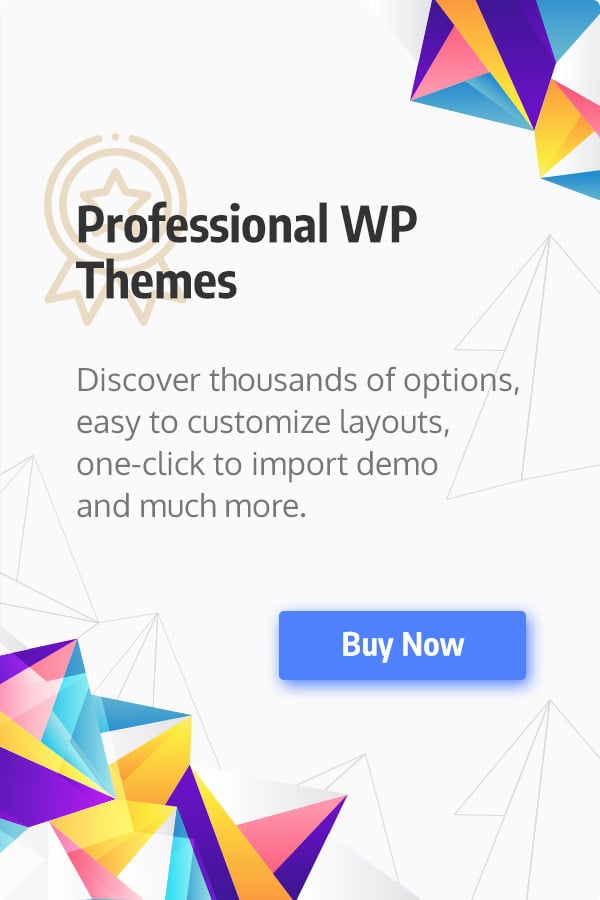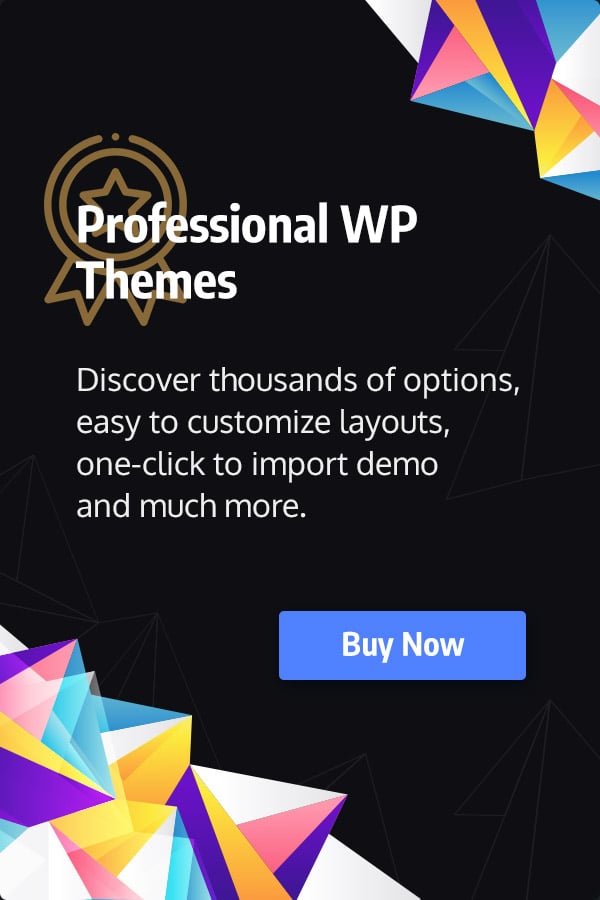The digital landscape is a vast and dynamic ecosystem, where visibility is paramount, and relevance is the currency. At the core of achieving both lies an intricate, inseparable bond between Search Engine Optimization (SEO) and content creation. While often discussed as separate disciplines, their true power emerges when they function as a unified, powerful partnership, each amplifying the strengths of the other to drive organic growth, audience engagement, and tangible business outcomes. This synergistic relationship is not merely a recommendation; it is a fundamental requirement for any entity seeking sustained success in the online realm.
SEO, in its essence, is the practice of optimizing websites to improve their visibility in search engine results pages (SERPs). It encompasses a multitude of technical considerations, ranging from site architecture and crawlability to mobile responsiveness and page speed. However, without high-quality, relevant content, these technical optimizations are akin to a perfectly engineered vehicle with no fuel. Content, on the other hand, provides the substance, the answers, the value that users seek. It is the language through which a brand communicates, educates, entertains, and persuades. Without SEO, even the most brilliant content remains hidden, adrift in the vast ocean of the internet, waiting to be discovered.
The partnership begins with a shared foundational understanding: the user. Modern search engines, particularly Google, have evolved far beyond simple keyword matching. Their sophisticated algorithms prioritize user intent, seeking to provide the most relevant, comprehensive, and trustworthy answers to queries. This shift mandates that both SEO and content strategies revolve around understanding the target audience’s needs, questions, and pain points. Content must be crafted to address these intents thoroughly and accurately, while SEO ensures that this valuable content is presented to the right users at the right moment.
Strategic alignment is the first critical step in forging this powerful partnership. It commences long before a single word is written or a line of code is optimized. This involves meticulous research and planning that integrates SEO insights directly into the content strategy development process.
Keyword Research as the Strategic Blueprint:
At the heart of any successful SEO content strategy is comprehensive keyword research. This isn’t just about identifying popular terms; it’s about uncovering the language your target audience uses, understanding their underlying motivations, and mapping these insights to the content you create. Keyword research acts as the bridge between user intent and content creation, ensuring that the content being produced aligns directly with what people are actively searching for.
The process extends beyond identifying short-tail, high-volume keywords. While these can provide broad visibility, the real gold often lies in long-tail keywords – longer, more specific phrases that indicate a higher degree of user intent. For example, instead of just targeting “running shoes,” a long-tail query might be “best waterproof running shoes for trail ultra marathons.” These queries typically have lower search volume but often boast higher conversion rates because the user’s intent is very clear.
Semantic SEO has further evolved keyword research. Search engines now understand the relationships between concepts and keywords, moving beyond exact match phrases. This means content should not just repeat a target keyword but rather encompass a range of semantically related terms, synonyms, and concepts that naturally belong together within a topic. Tools like Google’s Knowledge Graph illustrate this understanding of entities and their relationships. Therefore, content creators, guided by SEO specialists, must build comprehensive pieces that cover a topic holistically, using a natural language approach that mirrors how people speak and think.
Competitive keyword analysis is another vital component. By analyzing the keywords that competitors rank for, particularly those driving significant organic traffic, businesses can identify opportunities, uncover gaps in their own content strategy, and refine their keyword targets. This also helps in understanding the competitive landscape for specific queries and assessing the difficulty of ranking for certain terms.
Various tools facilitate this intricate process. Google Keyword Planner provides foundational data, while advanced platforms like Ahrefs, SEMrush, Moz Keyword Explorer, and SpyFu offer deeper insights into search volume, keyword difficulty, competitor analysis, and backlink profiles. Tools like AnswerThePublic can help uncover questions people are asking around a specific topic, directly informing content ideas that address explicit user needs. The outcome of this research is not just a list of keywords, but a detailed map of user intent, informing content themes, topics, and even the structure of individual pieces.
Audience Understanding and Persona Development:
Beyond keywords, a powerful SEO content partnership deeply understands the audience. This involves developing detailed buyer personas – semi-fictional representations of your ideal customers based on market research and real data about your existing customers. These personas go beyond basic demographics (age, location) to include psychographics (interests, values, attitudes), pain points, motivations, goals, and even preferred communication channels.
Understanding the customer journey – from initial awareness to consideration, decision, and even post-purchase advocacy – is crucial. Each stage of the journey demands different types of content and different keyword intents. For example, someone in the awareness stage might search for “what is content marketing,” indicating an informational intent, requiring educational blog posts or guides. Someone in the decision stage might search for “best content marketing software reviews,” indicating a transactional intent, requiring product comparisons or case studies. By aligning content types and SEO strategies with specific stages of the customer journey, the partnership ensures maximum relevance and effectiveness at every touchpoint.
Content Strategy and the Pillar-Cluster Model:
The insights gleaned from keyword and audience research culminate in a robust content strategy. A particularly effective framework that exemplifies the SEO-content partnership is the pillar-cluster model. A pillar page is a comprehensive, long-form content piece that covers a broad topic extensively, without going into specific detail on every sub-topic. It serves as the authoritative “hub” for a particular subject. Supporting this pillar page are multiple “cluster content” pieces – individual blog posts, articles, or guides that delve into specific sub-topics related to the pillar.
The power of this model lies in its internal linking structure. All cluster content links back to the pillar page, and the pillar page links out to relevant cluster content. This strong internal linking signals to search engines the hierarchical relationship between content pieces, reinforcing the authority of the pillar page on its broad topic. It also improves user experience by providing a clear path for readers to explore a topic in depth. From an SEO perspective, this structure helps build topical authority, improve crawlability, and distribute link equity across related content, leading to higher rankings for both pillar and cluster pages. From a content perspective, it ensures comprehensive coverage of a subject area, positions the brand as a thought leader, and creates a rich, interconnected content ecosystem.
The content strategy also dictates the formats of content to be produced. While blog posts are a staple, effective strategies diversify formats to cater to different learning styles and search intents. This can include:
- Blog Posts & Articles: For informational queries, guides, how-tos, industry insights.
- Long-form Guides & Ebooks: For deep dives into complex topics, lead generation.
- Infographics: For visual learners, easily shareable content.
- Videos: For tutorials, product demonstrations, brand storytelling, increasingly important for video search.
- Podcasts: For audio learners, building a loyal audience.
- Case Studies & Whitepapers: For demonstrating expertise and showcasing success, often for B2B audiences.
- FAQs: Directly addressing common questions, often contributing to rich snippets.
Each of these formats requires specific SEO considerations, which brings us to the actual creation phase.
Crafting SEO-Optimized Content: The Art and Science:
Once the strategic foundation is laid, the focus shifts to the meticulous process of crafting content that is both valuable to the user and optimized for search engines. This is where the art of compelling storytelling meets the science of technical SEO.
On-Page SEO for Content:
On-page SEO refers to all the optimizations made directly on a webpage to improve its ranking factors. For content, this involves several critical elements:
-
Title Tags and Meta Descriptions: These are often the first impression users have of your content in the SERPs. The title tag (the blue clickable headline in Google results) must be compelling, accurately reflect the content, and ideally include the primary target keyword, preferably closer to the beginning. It should be concise, typically under 60 characters, to avoid truncation. The meta description, while not a direct ranking factor, significantly influences click-through rate (CTR). It should be a concise, persuasive summary of the page’s content, enticing users to click, and naturally incorporate relevant keywords. A higher CTR for a given query can signal to search engines that your content is highly relevant, potentially improving rankings.
-
Header Tags (H1, H2, H3, etc.): These HTML tags define the structure and hierarchy of your content. The H1 tag should be reserved for the main title of the page, ideally containing the primary keyword. Subsequent header tags (H2, H3, H4) break down the content into logical sections and sub-sections, making it easily scannable for both users and search engine crawlers. Incorporating secondary keywords and related terms naturally within these headers helps reinforce topical relevance and improves readability. Properly structured content with clear headings enhances user experience and allows search engines to better understand the context and main points of your article.
-
URL Structure: A clean, descriptive, and keyword-rich URL is beneficial for both SEO and user experience. URLs should be short, easy to read, and ideally include the main keyword. For example,
yourwebsite.com/seo-content-partnershipis far more effective thanyourwebsite.com/p?id=12345. This makes it easier for users to understand what the page is about before clicking and helps search engines categorize the content. -
Keyword Integration within the Content Body: While keyword density is an outdated concept, the natural and strategic placement of primary and secondary keywords, as well as semantically related terms, throughout the content body remains crucial. The goal is to write naturally for humans first, ensuring the content flows well and provides genuine value. However, search engines need to understand the topic of your content. This is achieved by weaving in keywords organically where they make sense, ensuring sufficient context without resorting to keyword stuffing, which can harm rankings. Utilizing LSI (Latent Semantic Indexing) keywords – words and phrases that are semantically related to your primary keyword – helps search engines understand the broader context and relevance of your content.
-
Readability and User Experience (UX): Highly readable content not only keeps users engaged longer but also indirectly impacts SEO. Search engines consider user engagement metrics like bounce rate and time on page. If users quickly leave a page because the content is difficult to read or poorly organized, it signals low quality. To enhance readability:
- Use short sentences and paragraphs.
- Employ active voice.
- Utilize transition words and phrases.
- Break up text with bullet points, numbered lists, and subheadings.
- Ensure proper use of white space.
- Use clear, concise language appropriate for your target audience.
Tools like the Flesch-Kincaid readability test can provide objective scores.
-
Multimedia Optimization: Images, videos, and other multimedia elements enhance content engagement and can also be optimized for SEO.
- Image Optimization: Every image should have descriptive
alt text(alternative text) that accurately describes the image and, where appropriate, includes relevant keywords. This text is crucial for accessibility (screen readers for visually impaired users) and helps search engines understand the image content. Image file names should also be descriptive and include keywords. Furthermore, images should be properly compressed to minimize file size without sacrificing quality, contributing to faster page load times (a direct ranking factor). - Video Optimization: For videos, especially those hosted on platforms like YouTube, optimize titles, descriptions, tags, and use transcripts. Embedding videos on your site from YouTube or other platforms can increase time on page and engagement. Consider creating video sitemaps for easier indexing.
- Image Optimization: Every image should have descriptive
-
Internal Linking Strategy: A robust internal linking strategy is paramount for both SEO and UX. Internal links connect different pages within your own website. They help search engines discover and crawl more of your content, distribute “link equity” (ranking power) across your site, and signal the most important pages. For users, internal links provide pathways to explore related content, keeping them on your site longer and deepening their engagement. When creating content, identify opportunities to link to other relevant pages on your site using descriptive anchor text (the clickable text of the link) that includes keywords.
-
External Linking: Linking out to authoritative, relevant external websites (e.g., reputable research papers, established industry leaders, credible news sources) can add value to your content, demonstrate thoroughness, and build trust and authority with both users and search engines. These external links should always open in a new tab to keep users on your site.
E-E-A-T and Content Quality:
Google’s emphasis on E-E-A-T (Experience, Expertise, Authoritativeness, Trustworthiness) underscores the paramount importance of content quality. This framework is particularly crucial for “Your Money or Your Life” (YMYL) topics, which can impact a person’s health, financial stability, or safety.
- Experience: Does the content demonstrate firsthand experience or personal insight into the topic?
- Expertise: Is the content created by someone with demonstrable knowledge or skill in the subject?
- Authoritativeness: Is the website or author recognized as a go-to source for information on the topic?
- Trustworthiness: Is the information accurate, reliable, and presented transparently?
To fulfill E-E-A-T, content must be thoroughly researched, fact-checked, and preferably written or reviewed by genuine experts in the field. Citations and references to credible sources, author bios showcasing credentials, and transparent contact information all contribute to building trust. Original research, unique data, and fresh perspectives elevate content beyond mere regurgitation, positioning it as a valuable resource. The goal is to produce content that is not just optimized for algorithms but is genuinely the best possible answer to a user’s query.
User Experience (UX) and Page Experience:
Beyond content quality and on-page elements, the overall user experience plays a significant indirect role in SEO. Google’s “Page Experience” signals, including Core Web Vitals (Largest Contentful Paint, First Input Delay, Cumulative Layout Shift), mobile-friendliness, safe browsing, HTTPS security, and intrusive interstitial guidelines, directly influence ranking.
- Core Web Vitals: These metrics measure the loading performance, interactivity, and visual stability of a page. Content teams must work with technical SEOs and developers to ensure pages load quickly, are responsive to user input, and do not have unexpected layout shifts, all of which contribute to a smoother user experience.
- Mobile-Friendliness: With the majority of searches now occurring on mobile devices, content must be fully responsive and optimized for smaller screens. Text should be legible, buttons easily clickable, and images appropriately sized.
- Site Structure and Navigation: Intuitive site navigation and a logical content hierarchy make it easy for users to find what they need and for search engine crawlers to understand your site’s organization.
Schema Markup & Structured Data:
Schema markup, also known as structured data, is code that you can add to your website to help search engines better understand the content on your pages. While not a direct ranking factor, schema can significantly enhance your content’s visibility in the SERPs by enabling rich snippets. These visually enhanced search results can include star ratings, product prices, event dates, FAQ toggles, and more, making your listing stand out and often leading to higher CTRs. Common types of schema include Article schema, Product schema, FAQPage schema, HowTo schema, LocalBusiness schema, and Review schema. Implementing relevant schema requires collaboration between content creators (who define the content elements) and SEOs (who implement the technical code).
Amplifying Reach: Distribution and Off-Page SEO
Creating exceptional SEO-optimized content is only half the battle. To truly maximize its impact, content must be strategically promoted and distributed. This is where the content team’s outreach efforts and the SEO team’s focus on off-page factors converge.
Link Building Strategies (Content-Centric):
High-quality backlinks from authoritative and relevant websites remain one of the most powerful ranking signals. The best way to earn these links naturally is by creating truly exceptional, valuable content that others want to reference and share. However, content also serves as the foundation for proactive link-building efforts:
- Guest Posting: Writing high-quality, original content for other reputable websites in your industry is a classic link-building tactic. It provides an opportunity to earn a backlink to your site (usually in the author bio or contextually within the article) and expose your brand to a new audience. The content provided must be valuable to the host site’s audience, not just a thinly veiled promotional piece.
- Broken Link Building: This involves finding broken links on other websites, creating superior content that addresses the topic of the broken link, and then reaching out to the webmaster to suggest your content as a replacement. This is a win-win: the webmaster fixes a broken link, and you earn a relevant backlink.
- Resource Page Link Building: Many websites curate “resource” or “links” pages that list valuable content within their niche. If your content is genuinely a useful resource, you can reach out to these webmasters and suggest your content for inclusion.
- Skyscraper Technique: This involves identifying popular content with many backlinks, creating an even better, more comprehensive, and more up-to-date version of that content, and then reaching out to websites that linked to the original piece to suggest linking to your superior version.
- Digital PR and Earned Media: Creating unique, data-driven content, original research, or compelling visual assets can attract media attention, leading to mentions and backlinks from news outlets, industry publications, and influential blogs. This is often driven by PR teams working closely with content strategists and SEOs.
- Natural Link Acquisition: Ultimately, the most sustainable and impactful link building comes from creating content that is so valuable, insightful, and unique that it organically earns mentions and links from other websites over time. This reiterates the core principle that SEO and content are inextricably linked; exceptional content is the magnet for natural links.
Content Promotion Channels:
Beyond direct link building, a multi-channel approach to content promotion amplifies reach and visibility:
- Social Media: Different platforms cater to different content types and audiences. Visual content (infographics, short videos) thrives on platforms like Instagram and Pinterest. Longer articles can be shared on LinkedIn and Facebook. Twitter is excellent for quick updates and news. Optimizing content for each platform (e.g., creating platform-specific snippets, using relevant hashtags, engaging with comments) is key. Social signals, while not direct ranking factors, can increase content visibility, drive traffic, and potentially lead to natural backlinks.
- Email Marketing: Nurturing existing leads and subscribers with valuable content via email newsletters is a highly effective way to drive repeat traffic, build loyalty, and position your brand as an authority. Segmenting email lists allows for personalized content delivery, increasing engagement.
- Content Syndication and Repurposing: To maximize the ROI of your content efforts, repurpose existing high-performing content into different formats. A comprehensive blog post could become:
- An infographic (visual summary)
- A series of social media posts (short snippets, quotes)
- A segment in a podcast or video (audio/visual explanation)
- A section in an e-book or whitepaper
- A presentation or webinar
Content syndication involves republishing your content on third-party sites, usually with a canonical tag pointing back to the original source to avoid duplicate content issues and ensure SEO credit. This extends your reach to new audiences.
- Paid Promotion: While organic strategies are the long-term goal, paid channels (e.g., social media ads, native advertising, search engine marketing) can be used to initially boost content visibility, drive traffic, and test content performance, which can in turn provide data for organic optimization efforts.
The Iterative Loop: Measurement, Analysis, and Refinement
The powerful partnership between SEO and content is not a one-off endeavor; it’s a continuous, iterative process of creation, promotion, measurement, and refinement. Without proper analysis, efforts can be wasted, and opportunities missed.
Key Performance Indicators (KPIs) for SEO Content:
Measuring the right metrics provides actionable insights into content performance and its impact on SEO:
- Organic Traffic Volume and Trends: The most fundamental SEO KPI. How much traffic is your content attracting from search engines? Is it growing steadily? Which specific pieces are driving the most traffic?
- Keyword Rankings and Position Tracking: For your targeted keywords, how high do your content pieces rank in the SERPs? Tracking keyword positions over time helps assess the effectiveness of your SEO efforts and identify areas for improvement.
- Click-Through Rate (CTR) from SERPs: This metric indicates how often users click on your listing when it appears in search results. A low CTR for a high-ranking piece suggests issues with the title tag or meta description, prompting optimization.
- Engagement Metrics:
- Bounce Rate: The percentage of visitors who leave your site after viewing only one page. A high bounce rate might indicate that the content doesn’t meet user intent or is of poor quality/readability.
- Time on Page/Average Session Duration: How long users spend on your content. Longer durations generally signal that users find your content engaging and valuable.
- Pages Per Session: How many pages a user views in a single session. This indicates how well your internal linking guides users to explore more of your content.
- Conversions: Ultimately, SEO content should contribute to business goals. This could include leads generated, sales completed, newsletter sign-ups, downloads, or other desired actions. Mapping content to conversion funnels is crucial for demonstrating ROI.
- Backlink Profile Growth and Quality: Monitoring the number and quality of backlinks earned to your content pieces. This indicates the content’s authority and shareability.
Tools for Analysis:
Several essential tools provide the data needed for comprehensive analysis:
- Google Analytics (GA4): Provides a wealth of data on user behavior, traffic sources, conversions, and more. It helps understand how users interact with your content once they land on your site.
- Google Search Console (GSC): Absolutely critical for SEO. GSC shows how Google sees your site, including indexing status, crawl errors, search queries that bring users to your site (even if you don’t rank highly), and performance data like impressions, clicks, and average position for keywords. It’s invaluable for identifying content opportunities, technical issues, and understanding search visibility.
- Rank Tracking Tools: Tools like Ahrefs, SEMrush, Moz, and SpyFu provide detailed keyword ranking reports, competitive analysis, and insights into keyword difficulty.
- Backlink Analysis Tools: Ahrefs and SEMrush are also excellent for monitoring your backlink profile, identifying new links, disavowing harmful links, and analyzing competitor backlinks.
Content Audits and Optimization:
Regular content audits are essential. This systematic review of all your existing content helps identify:
- Underperforming Content: Pieces that aren’t ranking well, aren’t attracting traffic, or have high bounce rates. These may need updating, rewriting, or consolidating.
- Content Gaps: Topics that your audience is searching for but you haven’t yet addressed.
- Content Decay: Pages that were once high-performing but have seen a decline in traffic or rankings over time, often due to outdated information or increased competition.
Based on the audit, specific actions can be taken: - Refreshing and Updating: Adding new information, data, examples, or statistics to keep content current and relevant. This often gives content a significant SEO boost.
- Rewriting: Completely overhauling content that is poorly written or no longer serves its purpose.
- Consolidating: Merging multiple, thin, or overlapping content pieces into one comprehensive, authoritative article. This can resolve keyword cannibalization issues and create a stronger piece of content.
- Redirecting/Deprecating: Removing outdated or irrelevant content and setting up 301 redirects to a more relevant page if applicable, to preserve any link equity.
- On-page Adjustments: Fine-tuning title tags, meta descriptions, headings, internal links, and keyword usage.
A/B Testing and Iterative Improvements:
For high-traffic pages, A/B testing can be employed to optimize specific elements. This involves creating two versions of a page (A and B) and showing each to different segments of your audience to see which performs better against a specific metric (e.g., CTR, time on page, conversion rate). You could test different headlines, calls to action (CTAs), image placements, or even different content formats for the same topic. The insights gained from A/B testing can then be applied to other content pieces, leading to continuous improvement.
Future-Proofing the Partnership: Emerging Trends
The digital landscape is constantly evolving, and the powerful partnership between SEO and content must adapt to remain effective. Staying abreast of emerging trends ensures long-term success.
AI and Generative Content:
The rise of generative AI tools (e.g., ChatGPT, Jasper, Bard) has profoundly impacted content creation. AI can assist with brainstorming, outlining, drafting initial content, summarizing, and even generating ideas for titles and meta descriptions. However, it’s crucial to understand AI’s role as an assistant, not a replacement for human creativity and expertise.
- AI as an Assistant: AI can accelerate content production, particularly for routine or repetitive tasks. It can help overcome writer’s block or generate multiple variations for A/B testing.
- Human Oversight and Fact-Checking: AI-generated content can sometimes contain inaccuracies, biases, or lack the nuanced understanding required for E-E-A-T. Human oversight is essential for fact-checking, refining tone, adding unique insights, and ensuring the content truly provides value and meets user intent.
- Ethical Considerations: Google has stated that AI-generated content is acceptable as long as it is helpful, high-quality, and adheres to its guidelines. The key is quality, not the method of generation. However, using AI to churn out low-quality, spammy content will inevitably be penalized. The powerful partnership will leverage AI to enhance efficiency without compromising quality, originality, or trust.
Voice Search and Conversational SEO:
The increasing popularity of voice assistants (Siri, Alexa, Google Assistant) means that search queries are becoming more conversational and natural language-driven.
- Natural Language Queries: Content needs to be optimized for longer, more question-based queries that mimic how people speak. This involves anticipating common questions and structuring content with clear answers.
- Featured Snippets Optimization: Voice search often pulls answers directly from Google’s featured snippets (Position 0). Structuring content with clear, concise answers to common questions (e.g., in an FAQ format) significantly increases the chance of securing these coveted spots.
Video Content SEO:
Video is an increasingly dominant content format. Optimizing videos for search involves:
- YouTube SEO: YouTube is the second largest search engine. Optimizing video titles, descriptions (including relevant keywords and links), tags, thumbnails, and creating compelling content is crucial.
- Video Schema: Implementing VideoObject schema markup helps search engines understand the video content and display rich results.
- Transcripts: Providing full transcripts of videos improves accessibility and provides crawlable text for search engines, increasing discoverability.
Entity-Based SEO and Knowledge Graphs:
As search engines become more sophisticated, they move beyond keywords to understand entities (people, places, things, concepts) and the relationships between them, as represented in knowledge graphs.
- Moving Beyond Keywords: This means content creators should focus on building comprehensive content around specific entities, naturally incorporating related entities and concepts, rather than just stuffing keywords.
- Building Semantic Authority: By consistently producing high-quality content that demonstrates deep understanding and covers all facets of a topic and its related entities, a website can build semantic authority, signaling to search engines that it is a trusted source for that subject area.
Personalization and User Journey Optimization:
Future SEO content strategies will increasingly focus on delivering personalized experiences based on user history, location, device, and stage in the customer journey. This means dynamically serving the most relevant content to individual users, further enhancing engagement and conversion rates.
Sustainability and Ethical SEO Content:
As the digital space becomes more crowded, an emphasis on sustainable and ethical practices will grow. This includes:
- White-Hat SEO: Adhering to search engine guidelines and focusing on providing genuine value to users, rather than manipulative tactics.
- Content for Humans First: Prioritizing user experience, readability, and genuine helpfulness above all else.
- Accessibility: Ensuring content is accessible to all users, including those with disabilities.
- Data Privacy: Being transparent and responsible with user data.
The powerful partnership between SEO and content is not a luxury but an absolute necessity for success in today’s digital environment. It is a continuous dance between technical precision and creative expression, fueled by a deep understanding of the user. By integrating SEO insights from the initial planning stages through content creation, promotion, and ongoing optimization, businesses can unlock unparalleled organic visibility, build strong brand authority, foster deeper audience engagement, and achieve sustainable growth. This synergy ensures that content is not just found but valued, and that visibility leads directly to meaningful interactions and measurable results.










